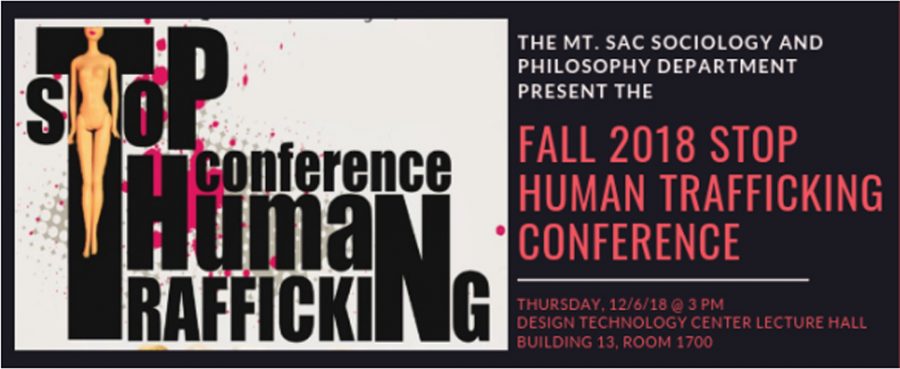In a bid to raise awareness about human trafficking, the sociology department held a conference on Dec. 6.
Sociology professor Jean Pierre Gatillon moderated the conference and its three speakers: San Bernardino Deputy District Attorney Tamara Ross, Pomona Police Officer Richard Martinez, and Journey Out speaker Tika Thornton.
Ross and Martinez were the first to present and they spoke of their experiences with victims.
Ross said she did not encounter prostitution in the juvenile court in 2000, but found a 14-year-old girl forced into prostitution in 2005. The individual in court said he was her uncle, but he was her pimp.
The big hat pimp concept is not old, and Ross added that it still happens to this day.
In fact, there’s been an initiative called “Stop the John” by the San Bernardino County District Attorney’s office where they release the names and photos of those they convict for solicitation.
“Our message is simple, and one that should be very clear by now. If you are convicted of purchasing another human being for sex in this county, we are going to share your name and photo with the world,” district attorney Mike Ramos states on their website.
Martinez then gave the general type of person who is trafficked: a victim of abuse, marginalized their entire life, child with a missing parent, a person who feels they are not a victim or any combination of those situations.
They also provided the definitions of pimping and pandering.
Pimping: To knowingly receive support from another person’s prostitution.
Ross gave the example of a mother telling her child to earn rent money in any way possible and knows her daughter is selling her body. That mother would be her daughter’s pimp.
Pandering: Persuading
To prove this in court, the jurors have to find that the defendant caused, induced, persuaded or attempted to cause a minor to engage in a commercial sex act. Intent must also be displayed and cases are generally easier.
It is harder to prove trafficking for adults, deprivation or violence of another’s liberty must be demonstrated. The standard to which it is held is called “substantial and sustained,” which Ross said confuses jurors.
Aside from jurors, state law is also interesting. Violence, duress, coercion and threats can lead to a 15-life sentence, which generally scares defendants, but in California that sentence is reduces to about seven years.
“Victim today. Trafficker tomorrow,” Ross said at the conclusion of her section.
She asked that people not look so harshly on hardened victims and encouraged people to ask local agencies what they can do to find and help.
The other speaker, Tika Thornton, was a survivor of human trafficking, and has worked for Journey Out for two years.
Journey Out is an outreach group that helps fight for survival, hope and freedom of all individuals who have had their lives destroyed by trafficking or exploitation.
Thornton has given Ted Talks and has been featured in a Buzzfeed video for her story on survival.
She grew up in “The Jungle” otherwise known as Baldwin Village, Los Angeles. Thornton’s father was caught up in the crack epidemic and a family member abused her from ages 6 to 10.
She had a strained relationship with her mother and fell into many of the characteristics of these victims before becoming one at 12.
After getting in trouble at school she ran away to avoid punishment. Eventually she entered the car of a stranger who offered her marijuana to calm down.
After taking it, she woke up bound with a man on top of her. This continued until she was able to escape and get to a guy’s house. This guy persuaded her into going back to the life after his mother kicked the two of them out.
She spent six years using it as survival, as she couldn’t get room and board as a child.
Thornton described herself as disloyal for having six to 10 pimps. The second they would turn violent she would go to a different one.
Eventually she got sick, and her latest pimp beat her for not working. She woke up in a hospital after a homeless man found her nude in an alley.
The nurse really took to her and gave her $200 to leave the state.
She left to Chicago and started again feeling empowered that she was in charge. Eventually she met an individual with a family who said she could never be with him if she continued so she stopped at 23.
Eventually that relationship fell through and she went back to Los Angeles, homeless.
She then went to a group home to give talks on recovering from the street life and those led her to where she is today.
Thornton said she used her pain as purpose and added that all survivors don’t look like her, eve noting that some people go up to her and say she does not like a survivor.
Her message as a victim turned survivor turned warrior, is that human trafficking is all around us.
“They’re in the same area,” she said. “In your very own backyard.”



